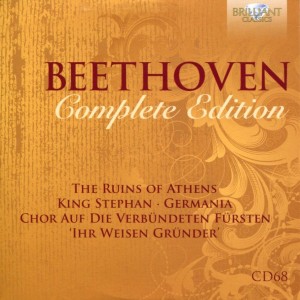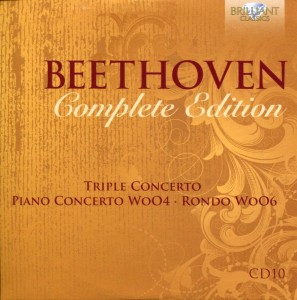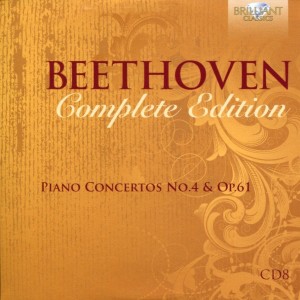 There’s something so satisfying about Beethoven’s music.
There’s something so satisfying about Beethoven’s music.
There are four compositions on today’s CD:
1. The Ruins of Athens
2. King Stephen
3. Germania
4. Chor Auf Die Verbundeten
It gave me a chuckle to see that three of the four titles are in English on the cover of the CD sleeve. But the fourth one isn’t. It’s like whomever was translating either just gave up, or there’s not a concise translation.
For some reason, none of the titles are in English on the back of the CD sleeve. Go figure.
According to its entry on Wikipedia,
The Ruins of Athens (Die Ruinen von Athen), Opus 113, is a set of incidental music pieces written in 1811 by Ludwig van Beethoven. The music was written to accompany the play of the same name by August von Kotzebue, for the dedication of a new theatre at Pest.
A second overture was written in 1822 for the same play. It was composed especially for the reopening of Vienna’s Theater in der Josefstadt in 1822. The second overture is now known as The Consecration of the House.
Perhaps the best-known music from The Ruins of Athens is the Turkish March, a theme that even many who are not avid classical music listeners are familiar with. The overture and the Turkish March are often performed separately, and the other pieces of this set are not often heard[citation needed]. Another of Beethoven’s compositions, Six variations on an original theme, Op. 76, uses the Turkish March as its theme.
And this entry about the Turkish March:
The Turkish March (Marcia alla turca) is a well-known classical march theme by Ludwig van Beethoven. It was written in the Turkish style popular in music of the time.
The theme was first used in Beethoven’s “6 Variations on an Original Theme”, Op. 76, of 1809. In 1811 Beethoven wrote an overture and incidental music to a play by August von Kotzebue called The Ruins of Athens (Op. 113), which premiered in Pest in 1812. The Turkish March appears as item No. 4 of the incidental music. Many music lovers associate the theme with The Ruins of Athens, although that was not its original appearance.
The march is in B flat major, tempo vivace and 2/4 time. Its dynamic scheme is highly suggestive of a procession passing by, starting out pianissimo, poco a poco rising to a fortissimo climax and then receding back to pianissimo by the coda.
The Overture to The Ruins of Athens is amazing. But Continue reading


